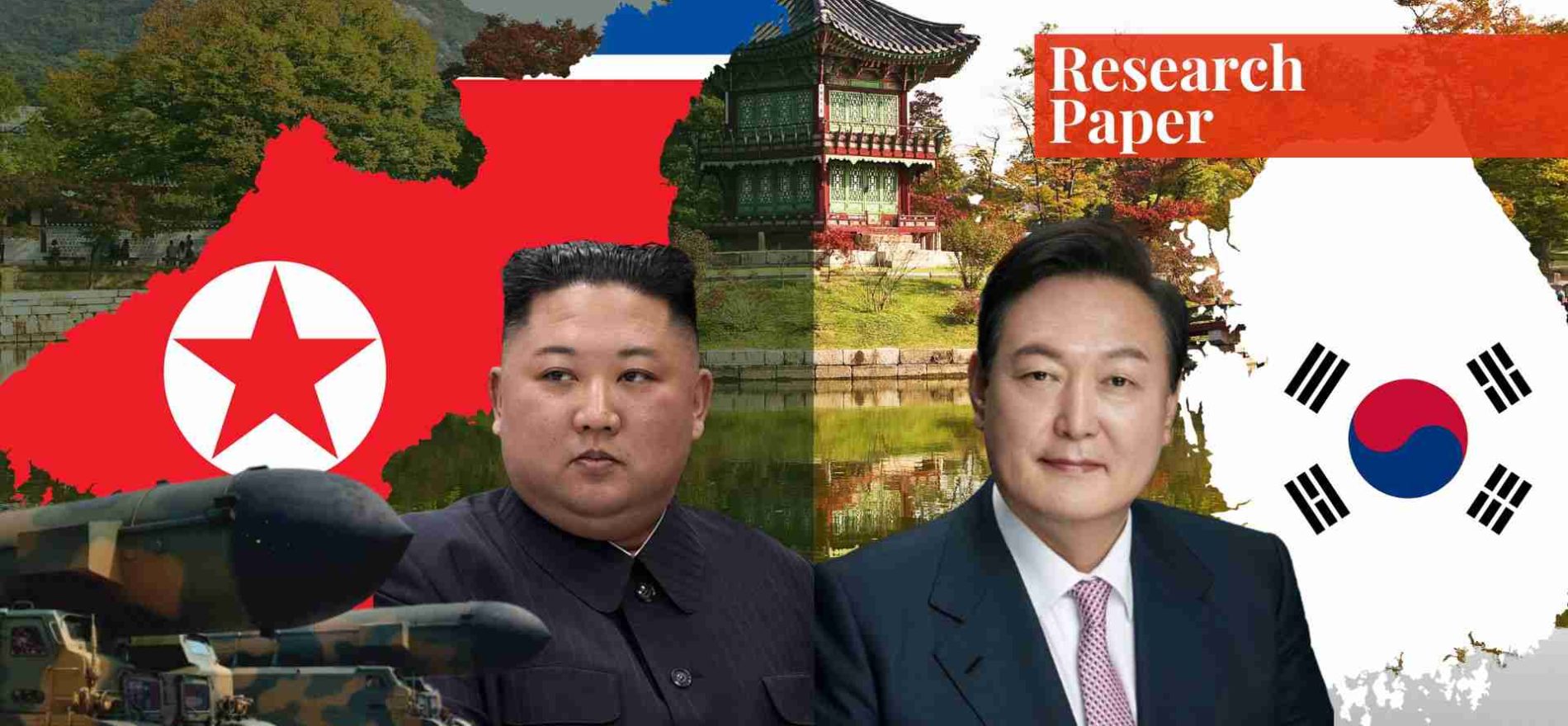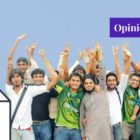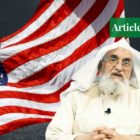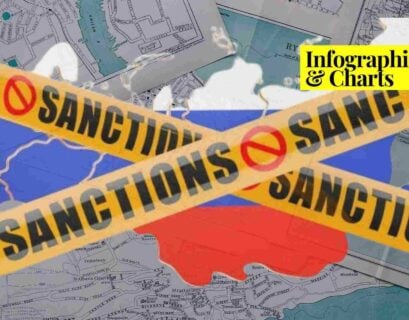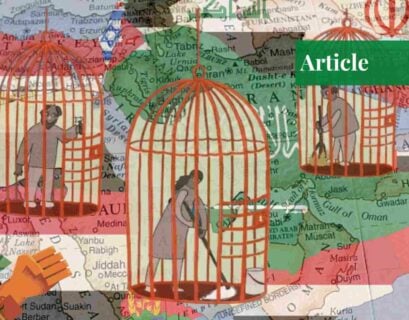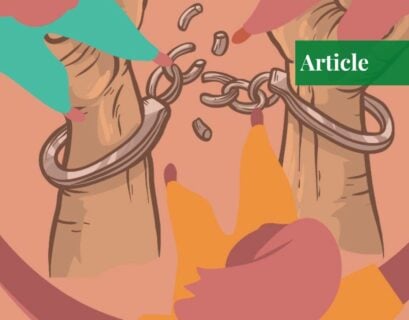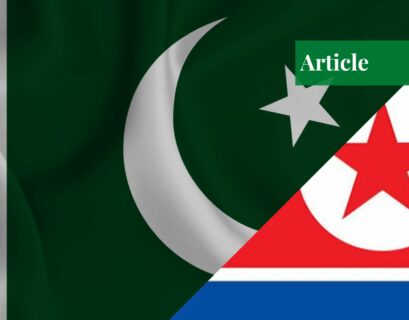Introduction
Political systems all around the world are diverse in nature; they vary from country to country. There are five most commonly found political systems in today’s world order: democracy, republic, dictatorship, monarchy, and communism. The countries used as a case study for this paper fall under the scope of dictatorship (centralized government) and democracy (elected representation). North Korea and South Korea have an extensive history of war and annexation which has shaped their political structures.
After Japan surrendered to the Allies (1945), the Korean peninsula was divided into two zones: North Korea and South Korea. The South was controlled by the United States whereas the North was controlled by the Soviet Union. However, it was not until 1979 when Park Chung-Hee, South Korea’s president from the last military regime, was assassinated that democracy was actualized (Kamiya, 1980, 744-753).
North Korea, on the other hand, maintained its authoritarian political system and has remained under the Kim Dynasty till this day. This paper, through detailed research, attempts to create a discourse regarding the success of South Korea as a developed state with reference to the process of democratization and whether or not it was a key element in the progress of the country.
Moreover, North Korea will similarly be analyzed through the lens of social liberalism. This will lead to a final, speculative assertion about the following question: What are the differences between the two Korean political systems, and how do they limit or manage human rights in their respective states?
Literature Review
A variety of research papers were considered and read to help produce this research paper. Several sources confirmed that North Korea and South Korea both had limitations in terms of individual freedom. Social liberalism warrants individual freedom (Zipp, 1986), the autonomy of one’s self, and one’s decisions regarding their life. In the current global order, social liberalism has become the most significant idea that all international institutions support and try to implement.
For example, the United Nations is a prominent supporter of human rights and freedom for all. The hegemon today, the US, is a pioneer of social liberalism and has a significant, if not complete, power over international institutions to encourage the implementation of this ideology. Hence, it can be safely asserted that both politically and socially, social liberalism, is a global priority making it the most suitable theory for the analysis of this case.
Sakai (2016) establishes that North Korea has sustained its leadership style and political structure by internalizing oppression in the minds of the citizens through education and strict laws. This was supported by a huge number of newspaper articles and statistical websites.
Research Methodology
This paper uses secondary sources as a primary means for research. Journal articles along with a number of e-news articles have been used to form a constructive argument. The data used was majorly qualitative, but certain quantitative and factual data (eg. Human Rights Watch annual reports, United Nations Human Rights Council Reports, etc) about the countries’ structure are used to form a solid basis for this paper.
Theoretical Framework
An array of theories can be used to analyse the structures of the two Koreas in terms of human social and political freedoms. This paper uses realism and social liberalism to scrutinise the issues with the North Korean political framework while looking at South Korea as an example of a liberal democracy to form a comparison between the two. The basic aim is to compare the two political systems with reference to social liberalism and figure out the differences between the two states with clarity.
Realism is a befitting theory to use in this context due to its relatability with North Korea and the rest of the world. North Korea has historically been a purely realist country considering its authoritarian government style, highly centralised economy and power discrepancy within the country where the elite rules the majority directly, leaving no room for choice.
The Gap
One major gap in the entire process of data collection was that the civil North Korean perspective was missing. This is because of the control and censorship of the people of North Korea. A Freedom House report of 2021 shows that North Korea has given the people only 3/10 human rights. Therefore, 97 basic human rights are alienated while suppressing the masses and their freedom. The media is censored with absolutely no connection to the outside world through exchange of literature, physically or through the worldwide web.
The Internet is not allowed. Hence, any literature made by the people of North Korea who go through this systemic control is missing. This means that the literature found has narratives of the Western media which may be Eurocentric in nature. Hence, there might be a bias against North Korea. However, the bias is countered by factual information and reports produced about the oppression of individual liberty by international institutions like the UN.
Establishing a Basis
South Korea is a liberal democracy and its status has recently been shifted from a developing economy to a “developed economy” by the United Nations at a trade and development conference (Hankyoreh, 2021). This makes it the most adequate developed country to compare North Korea with, considering their shared history, values and culture. North Korea is still in a developing stage with an estimated 60% of the total population living in poverty and the GDP per capita is approximately $790 (Vienna University of Economics and Business, 2020).
Side by Side Analysis
South Korea became a democracy after a series of pro-democratic mass protests, also known as the June Democracy Movement, took place in 1987 (Adesnik & Kim, 2008). The surface level argument, as stated in a plethora of pre-written research papers, is that the reason for a different structure in South Korea is that it was backed by the United States and North Korea was backed by Russia.
South Korea is a democratic republic where powers are shared between the executive, the legislature and the judiciary. The country had a long history of military rule and during that time, it became part of the “Asian Tigers” and the “Economic Cooperation and Development” as a result of Park Chung-Hee’s industrialization strategies (Cha & Lee, 2013). Therefore, the country faced significant economic growth.
However, it was still deemed politically backward due to the nature of its government. Hence, the shift took place. Korean nationalism was in its boom post-Cold War, and in 1987, the state had its first democratic elections electing Chun Du-Hwan as its first democratically elected president while also restarting a party system. The political structure is fairly simple to understand:
| South Korea’s Political System (Yu, 2021) |
|---|
| Presidential system |
| Presidential Term: 5 years |
| Separation of Powers |
| Sixth Republic |
| Unicameral National Assembly |
| Mixed Economy with Considerable Centralisation |
| Multiparty system |
| Ddominant Parties: Grand National Party & Democratic Party |
| Divided into nine provinces for administration |
North Korea, on the other hand, follows a “Suryong” leader ideology which entails hereditary leaders guiding the people and shaping the system (Sakai, 2016). Therefore, Kim Jong-un, the current supreme leader, is the guiding leader of the state at the moment.
The supreme leader (Kim Jong-un) used to have the highest administrative authority, but in 2016 revisions of the constitution gave the National Defense Authority the highest administrative office rank and currently, Kim Jong-un is the chairman of the National Defense Authority. So, in practical terms, it did not make a difference in terms of who has the power. The roles changed on paper, but the power remained with Kim Jong-un with just a change in titles.
| North Korea’s Political System (Hahn, 2021) |
|---|
| Dynastic Dictatorship |
| Juche Ideology |
| One Party System |
| Three Branches (Codependant): Administration, Judiciary, and Legislature |
| One Legislative House: Supreme People’s Assembly |
| Unitary State |
South Korea
Currently, South Korea’s system is somewhat like the United States’ in some aspects, considering the influence. It follows a representative presidential system that gives its people the right to hold general elections every five years in order to choose their representatives. This clearly shows that the state gives its citizens the basic human right to choose and elect leaders who are a part of the national assembly.
Moreover, the country has a multiparty system which again entails a right to choice and freedom in terms of politics. The citizens have a free right to choose. However, the research showed a number of limitations that South Korea still has. The country has restrictions on freedom of expression, association, and assembly. Moreover, discrimination against LGBT individuals, foreigners, minorities, refugees, and people with HIV/AIDS is a huge problem (Roth, 2017).
A prominent example is that of the National Security Law. Any positive sentiment expressed in favor of North Korea by a citizen that is classified as North Korean “propaganda” can be problematic and can lead to severe criminal charges and penalties. Hence, if the state believes that you have joined an anti-state organization, you are in trouble with the law.
It further gets moot because the constitution does not clearly define what “anti-state organizations” are. The law likewise gives criminal punishments to any individual who “establishes or joins an association pointed toward proliferating, actuating, adulating, or acting in harmony with” an anti-government/state organization. In 2017, an owner of an e-library, Lee Jin-Young, was detained on the reasoning that his material benefitted the enemy—North Korea. He was dismissed later.
Women cannot opt for an abortion unless their spouses permit it, and can only happen till 24 weeks of the pregnancy. After 200,000 people signed a petition in October 2017, the government announced that progress would be made regarding legalization, but that did not happen in reality and the government stated that it needed to conduct more research in order to respond adequately.
Statistics state that South Korea’s laws on adoption are corrective and harmful to women. Abortion can lead up to a punishment of up to one year in jail or fines of up to 2 million won (US$1,820). Medical professionals who perform adoption can look at as long as two years in jail.
Special cases are allowed in instances of sexual assault, incest—assuming the guardians are blood or marital family members that can’t wed lawfully—or if proceeding with the pregnancy is probably going to physically harm the pregnant woman’s wellbeing. An exception is also possible when the pregnant woman or her companion has one of a few genetic problems or transmittable illnesses that are assigned by government order.
The Economist magazine’s “Glass Ceiling Index,” which assesses women’s advanced/higher education, women in administrative positions, and the number of female members present in the parliament, gives the Republic of Korea the lowest score among nations that are a part of the Organisation for Economic Cooperation and Development (OECD), with 25/100 points on their scale (OECD, 2017).
In contradiction to the guidelines of the World Health Organisation, the South Korean government had made it mandatory for international students studying in South Korea and teachers to get tested. It did not justify it with adequate reasoning, according to the Geneva-based Committee on the Elimination of Racial Discrimination (CERD) and the office of the United Nations High Commissioner for Human Rights.
They stated, “It does not appear to be justified on public health grounds or any other ground, and is a breach of the right to work without distinction to race, colour, national or ethnic origin.” (United Nations, 2015). However, in 2017, this law was abolished under the presidency of Moon Jae-In.
The International Labour Organisation’s basic and essential rights to organize collective action of bargaining and freely associating have not been made officially valid by the government while government officials, themselves, are not allowed to form a union as it is legally prohibited. Influential union organizations such as the Korean Teachers and Educational Workers’ Union (KTU) and the Korean Government Employees Union (KGEU) have been refused legal recognition by the South Korean government.
The former’s legal status was revoked in late 2013. The KGEU has not even been allowed to legally register as a union and any attempts to do so have been denied by the government. Government policies such as The Trade Union and Labour Relations Adjustment Act strip unions of basic legal rights by requiring them to exclude members in the case that they are dismissed from work, even when the reason for them being stripped of employment is affiliation with a legal trade union.
North Korea
When compared with North Korea, South Korea still appears to be a utopian land of freedom. North Korea has a constitution, but research shows that it is merely a tool for the government to exercise its power over the citizens, and not a document made to protect the citizens of the state (Yoon, 2003).
The supreme leader ensures the implementation of his will and decision through the organization that is the “Workers’ Party.” The party states that it represents the will of the people. Moreover, everyone in North Korea is a part of an organization, except for newborns. For example, stratum-specific organizations like the Kim Il-sung Socialist Youth League, the Korea Democratic Women’s Union, and the General Federation of Trade Unions of Korea (Sakai, 2016).
This clearly shows that people are made part of the system through organizations and are governed indirectly too. If they become part of the system, they are not expected to rebel against the system, in simple terms. People are divided into neighborhood units and the population is controlled through these units. The houses are publicly assigned by the state and these residential areas are the smallest zones of administration.
Also, the government refused to acknowledge the existence of four political prison camps, housing nearly 120,000 people and subjecting them to extremely harsh conditions such as forced labor, starvation, and torture. A large number of these detainees did not have any internationally recognizable proven crime and had been detained without proper reasoning. They were labeled as being connected to people who were a threat to the state.
Some of the detainees were imprisoned for exercising their basic rights such as leaving the country of their volition. Among the detainees, nearly six were nationals of South Korea of which three were missionaries and were serving life sentences and the rest were of North Korean origin and moved to the South. Authorities deprived them of their rights to contact lawyers of their choice, diplomats from South Korea, and even their own families. Hence, the control is strict.
Moreover, the North Korean government issued an official public apology to the South Korean president on the 25th of September 2021for shooting down a South Korean civilian official three days prior. The official was found floating on an object in North Korean waters and was interrogated from a distance before being shot. Despite the apology, no mention was made of any judicial procedure or investigation into the killing.
This event could be seen as a direct consequence of the Ministry of Social Security, reportedly, authorizing border security to open fire on unauthorized persons that enter a one-kilometer distance of the North Korean-Chinese border. The ministry defined these as safety measures to curb the spread of infections caused by COVID-19.
Another highly important element is the active participation of the citizens in the military. Organizations like the Reserve Military Training Corps, the Worker-Peasant Red Guards, and the Young Red Guards exist directly under the command of the leader (Kim Jong-un) and the party, and are hence subjected to indoctrination at their command.
The Western media has, countless times, covered the bizarre laws made by the state of North Korea, from a ban on South Korean music, movies, and shows to a ban on jeans, justifying it as a way to counter a “capitalistic lifestyle” (Elan, 2021). North Korea has even limited haircuts to a strict range to choose from terming certain haircuts as anti-socialist behavior (Zitser, 2021). According to a detailed report published by a South Korean human rights group (TJWG, 2021), it was revealed that 7 individuals were hanged by the state over indulgence in Kpop.
Therefore, the Kim Jong-un regime has used the policy of food rationing as a means to suppress its population for several decades after its independence (Sakai, 2016). The country faces extreme calamities in form of floods quite frequently which severely impact harvesting. North Korea is also dependent on foreign aid. Even though North Korea, according to this paper’s analysis, appears to be a realist state following the Machiavellian ideology of self-sufficiency, it has not been able to achieve it. It relies on the US and South Korea for heavy food aid (Human Rights Watch, 2006).
Conclusion
This paper concludes that the political systems of South and North Korea are polar opposites in terms of democracy, social structure, and political system. South Korea is a comparatively stable country that has the support of international institutions and the world hegemon, the US, whereas, North Korea faces serious sanctions by the world.
Due to South Korea’s harmony with the US, it has given its citizens adequate freedom with the exception of systemic gender discrimination, freedom of expression regarding North Korean support, and constitutional discrepancies and vagueness. North Korea, however, is not in compliance with almost every global order and the elements of social liberalism. It alienates individual socio-political autonomy by the use of force by the Workers’ Party and the dictator Kim Jong-un.
References
- Adesnik, A. D., & Kim, S. (2008, July). If At First You Don’t Succeed: The Puzzle of South Korea’s Democratic Transition.
- Al Jazeera. (2021, September 14). Rights body urges South Korea to pass anti-discrimination law. Al Jazeera. https://www.aljazeera.com/news/2021/9/14/lgbt-students-face-bullying-discrimination-in-south-korea
- Cha, V., & Lee, J.-Y. (2013). Politics of South Korea. Oxford Bibliography. https://www.oxfordbibliographies.com/view/document/obo-9780199756223/obo-9780199756223-0110.xml
- Elan, P. (2021, May 27). North Korea bans skinny jeans as symbol of ‘capitalistic lifestyle’. The Guardian. Retrieved December 19, 2021, from https://www.theguardian.com/fashion/2021/may/26/north-korea-bans-skinny-jeans
- Equaldex. (2021). LGBT Equality Index. Equaldex. Retrieved December 19, 2021, from https://www.equaldex.com/equality-index
- Hahn, B.-H. (2021). North Korea – Government and society. Britannica. Retrieved December 19, 2021, from https://www.britannica.com/place/North-Korea/Government-and-society
- Hankyoreh. (2021, July 5). UNCTAD classifies S. Korea as developed economy : International : News. The Hankyoreh. Retrieved December 16, 2021, from https://english.hani.co.kr/arti/english_edition/e_international/1002230.html
- Human Rights Watch. (2006, May 3). The North Korean Government’s Control of Food and the Risk of Hunger | HRW. Human Rights Watch. Retrieved December 19, 2021, from https://www.hrw.org/report/2006/05/03/matter-survival/north-korean-governments-control-food-and-risk-hunger
- Kamiya, F. (1980). The Korean Peninsula after Park Chung Hee. Asian Survey, 20(7), 744-753. https://www.jstor.org/stable/2643926
- Nadeem, S. (2022, September 7). Ulchi Freedom Shield: The US and South Korea’s joint military exercises. Paradigm Shift. Retrieved from https://www.paradigmshift.com.pk/ulchi-freedom-shield/
- OECD. (n.d.). The 2017 OECD report The Pursuit of Gender Equality: An Uphill Battle explores how gender inequalities persist in social and eco. OECD. Retrieved December 19, 2021, from https://www.oecd.org/korea/Gender2017-KOR-en.pdf
- OECD. (2017). The Pursuit of Gender Equality. https://www.oecd.org/korea/Gender2017-KOR-en.pdf
- Roth, K. (2017). World Report 2018: South Korea. Human Rights Watch. Retrieved December 19, 2021, from https://www.hrw.org/world-report/2018/country-chapters/south-korea#171cf2
- Sakai, T. (2016). North Korea’s Political System. International Circumstances in the Asia-Pacific Series.
- TJWG. (2021). Mapping Killings Under Kim Jong Un. https://en.tjwg.org/wp-content/uploads/2021/12/Report2021_MappingKillingsUnderKimJong-un.pdf
- Transition to a Democracy and Transformation into an Economic Powerhouse: Korea.net : The official website of the Republic of Korea. (2015). Korea.net. Retrieved December 19, 2021, from https://www.korea.net/AboutKorea/History/Transition-Democracy-Transformation-Economic-Powerhouse
- United Nations. (2015, May 20). Republic of Korea’s foreigners-only HIV test violated New Zealand teacher’s rights – UN experts. UN News. Retrieved December 19, 2021, from https://www.ohchr.org/en/press-releases/2015/05/republic-koreas-foreigners-only-hiv-tests-violated-new-zealand-teachers
- Vienna University of Economics and Business. (2020, March 18). 60% of North Koreans live in absolute poverty—higher than ever thought. Phys.org. Retrieved December 16, 2021, from https://phys.org/news/2020-03-north-koreans-absolute-povertyhigher-thought.html
- Yoon, D.-K. (2003). THE CONSTITUTION OF NORTH KOREA. Fordham International Law Journal, 27(4). https://ir.lawnet.fordham.edu/cgi/viewcontent.cgi?referer=https://www.google.com/&httpsredir=1&article=1934&context=ilj
- Yu, W. I. (2021). South Korea. Britannica. Retrieved December 17, 2021, from https://www.britannica.com/place/South-Korea
- Zipp, J. F. (1986). Social Class and Social Liberalism. Sociological Forum, 1(2). https://www.jstor.org/stable/684448
- Zitser, J. (2021, May 23). North Korea: Mullet Haircut Ban in ‘Anti-Socialist Behavior’ Crackdown. Insider. https://www.insider.com/north-korea-mullet-haircut-ban-in-anti-socialist-behavior-crackdown-2021-5
If you want to submit your articles and/or research papers, please check the Submissions page.
The views and opinions expressed in this article/paper are the author’s own and do not necessarily reflect the editorial position of Paradigm Shift.
